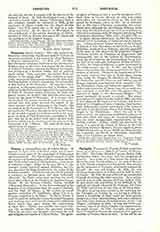

Tarsus, a metropolitan see of Cilicia Prima. It appears to have been of Semitic origin and is mentioned several times in the campaigns of Salmanasar and Sennacherib. The Greek legend connects it with the memory of Sardanapalus, still preserved in the Dunuk-Tach, called tomb of Sardanapalus, a monument of unknown origin. When in the year 401 B.C., the younger Cyrus marched against Babylon, the city was governed by King Syennesis in the name of the Persian monarch. Tarsus was already Greek and had a tendency to become more and more hellenized. Alexander the Great came near meeting his death there after a bath in the Cydnus, the modern Tarsus-Irmak. By its literary schools, Tarsus rivalled Athens and Alexandria. It was then comprised in the kingdom of the Seleucides, took the name of Antioch, and the Bible (II Mach., iv, 30) records its revolt against Antiochus IV Epiphanes, about 171 B.C. Pompey subjected it to Rome. To flatter Caesar it took the name of Juliopolis; it was there that Cleopatra and Anthony met, and it was the scene of the celebrated feasts which they gave during the construction of their fleet. Tarsus was already the caput Cilicae, the metropolis, where the governor resided. When the province was divided it remained the civil and religious metropolis of Cilicia Prima. The greatest glory of Tarsus is that it was the birthplace of St. Paul (Acts, ix, 11; xxi, 39; xxii, 3), who took refuge there after his conversion (Acts, ix, 30), and was joined by Barnabas (Acts, xi, 25). It is probable that at this time a Christian community was established there, although the first bishop, Helenus, dates only from the third century; he went several times to Antioch in connection with the dispute concerning Paul of Samosata (Eusebius, “Hist. eccl.”, VI, xlvi; VII, v).
Le Quien (Oriens christianus, II, 869-76) mentions twenty-two of its bishops, of whom several are legendary. Among them are Lupus, present at the Council of Ancyra in 314; Theodorus, at that of Nicaea in 325; Helladius, condemned at Ephesus, and who appealed to the pope in 433; above all the celebrated exegete Diodorus, teacher of Theodore of Mopsuestia and consequently one of the fathers of Nestorianism. From the sixth century the metropolitan See of Tarsus had seven suffragan bishoprics (Echos d’Orient, X, 145); the Greek archdiocese is again mentioned in the tenth century (op. cit., X, 98), and has existed down to the present day, being comprised in the Patriarchate of Antioch. Owing to the importance of Tar-sus many martyrs were put to death there, among them being St. Pelagia, St. Boniface, St. Marinus, St. Diomedus, and Sts. Cerycus and Julitta several Roman emperors were interred there—namely, Tacitus, Maximinus Daza, and Julian the Apostate. The Arabs took possession of Tarsus from the seventh century and kept it until 965, when Nicephorus Phocas annexed it again to the Byzantine Empire. The union continued for nearly a century. The crusaders captured it again from the Turks in 1097, and then it was disputed between Latins, Greeks, and Armenians of the Kingdom of Lesser Armenia; these last became definitively masters until about 1350, when it was sold to the Egyptians. Since then Tarsus has belonged to the Mussulmans. About the end of the tenth century, the Armenians established a diocese of their rite, which still exists; St. Nerses of Lambroun was its most distinguished representative in the twelfth century. Tarsus, which has preserved its name, is a caza of the vilayet of Adana on the railroad from Adana to Mersina; the city numbers about 18,000 inhabitants, of whom 10,000 are Mussulmans, the remainder are Greek or schismatic Armenian. Only a few Catholics are found there.
S. VAILHE

